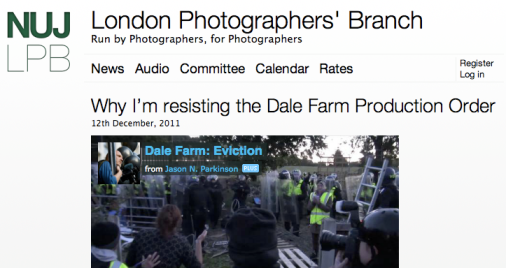If you want to get media online there are a number of approaches, broadly split as follows:
- Uploading via email
- Uploading via a webpage on a specialist audio/image service
- Uploading within a blogpost, e.g. on WordPress
This post will explain briefly how to do each.
Uploading multimedia via email
If speed is an issue with getting your multimedia online, email may be the quickest way to do it – especially if the multimedia is on a mobile phone.
Posterous is the service I use most on that front. If you email your image or audio to post@posterous.com then Posterous will publish it on a blog (even if you’ve not set up an account with them). Audio will be embedded in a special player; video too. And if you’ve uploaded more than one image it will put them in a gallery. The subject line of your email will be used as the title.
You will then get an email back from Posterous telling you that your email was published, with a link to the page. Note: if you have more than one blog with Posterous the site will give you a different email to use for each one, e.g. birminghamcrimenews@posterous.com
Many other services allow you to upload via email too – including Tumblr, Flickr and Facebook (see this help page). You just have to find out what email address to use. Search for ‘uploading email’ and the name of the service (e.g. Flickr, etc.) to find a how-to.
Uploading via a webpage on a specialist audio/image service
If you prefer to have your audio/images hosted on a service specifically for audio or images, then create an account first (Flickr is good for photos; Soundcloud and Audioboo for audio – there’s a fuller list at http://delicious.com/paulb/tools+audio and http://delicious.com/paulb/tools+images).
Then go back, and log in with the username and password you chose.
There should be an ‘UPLOAD’ link where you can fill in various information about your media (e.g. description, title), find the file on your computer, and upload.
Once it’s uploaded the webpage should show you a link to the new content. You can now share a link to that page wherever you want.
Quite often there’s also a button marked ‘embed’ or ‘<>’ which will give you the code to put that content on another webpage, such as a blog post.
However, note that most embed code will not work in blogs on WordPress.com. Instead, see if the service has a ‘shortcode’ for embedding media on WordPress, by looking for it on this page: http://en.support.wordpress.com/shortcodes/ and following the relevant link to see instructions on how to use them.
Uploading within a blogpost, e.g. on WordPress
If you want to include your images in a blog post, then create a new post, and when you’re ready to add that media look for the ‘Add media’ button (in WordPress it’s just above the formatting buttons).
Click on this and you should have the option to upload media from your computer (in the same way as you would upload to a specialist service, above), or grab it from a URL.
If you’re doing the latter, make sure you use the image URL, not the URL of the page containing it. This, for example, is just a webpage URL: http://www.flickr.com/photos/onlinejournalismblog/6078887277/in/photostream – to find out the URL of the image you’d have to right-click it and select ‘Copy image URL’ or – if you’re on Flickr – select the size you want to look at, and then on that page right-click the image and select ‘Copy image URL’.
An image URL should end in .jpg or .png or .gif
Note also that many Flickr images have ‘All rights reserved’ and you may not be able to embed those images. Contact the copyright holder to ask if you can have a copy to upload.
Once you’ve chosen the image to upload or embed, you’ll need to add descriptions such as a title and alternative description before clicking ‘Insert’ or similar to add it to your post.
If you’re uploading audio to a blog you need to make sure that your blog is set up to host audio. More information on that here: http://en.support.wordpress.com/audio/
In a nutshell, with audio in particular it’s generally easier to upload to a specialist service like SoundCloud or Audioboo first, and then use one of the shortcodes listed under ‘Audio’ here: http://en.support.wordpress.com/shortcodes/ – make sure to click through to the full instructions.
Video presents similar problems: make sure your blog can host it, and that the video itself is in the right format if you really want to upload it directly. In most cases, however, simply uploading to YouTube and adding a link in your post will automatically mean it is converted and embedded.
